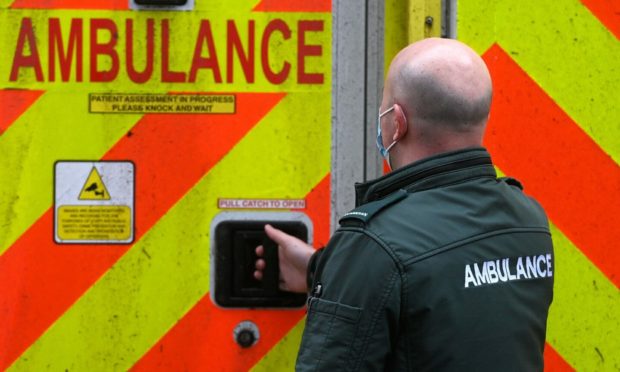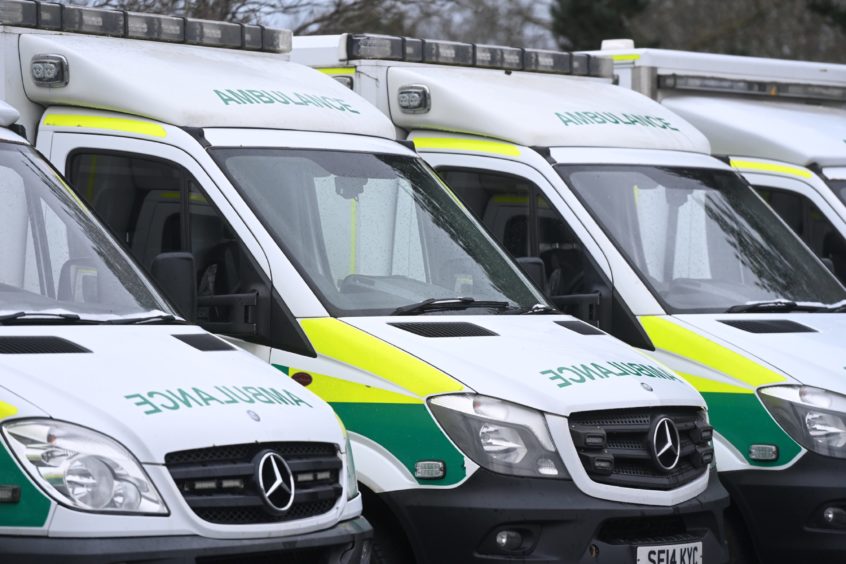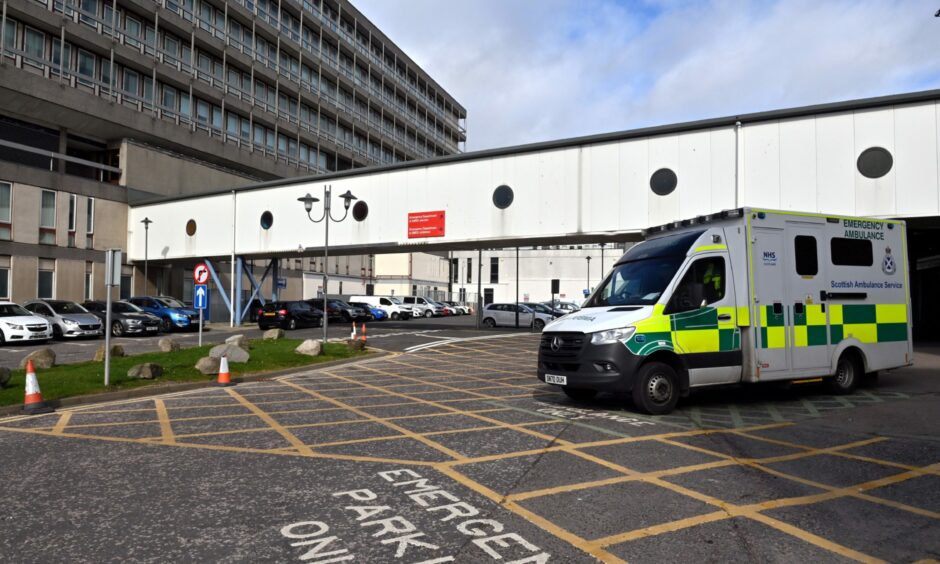A trade union has claimed “lives are being put at risk” as the average 999 ambulance waiting time has increased to six hours across Scotland.
Worrying waiting times have been increasing, leaving patients feeling let down by the system.
The average turnaround time, from the 999 call to completion, should take crews between 55-70 minutes.
However, it has been reported that the average ambulance response time alone has increased to six hours.
Paramedics have warned that these excessive waiting times are putting lives at risk and staff say it is down to “system overload”.
Upon her arrival at the hospital is was discovered she was suffering from sepsis – a life-threating condition that needs immediate medical attention.
She described her wait as “absolutely pathetic”.
Potential risk to patients
According to union Unite Scotland, there have been several “adverse clinical events” over the last 72 hours arising from the delays. Hospital turnarounds peaked at seven hours on Tuesday night with some patients waiting more than 24 hours for a bed.
They have also raised concerns over the potential risk to patients over clinical decision-making due to fatigued ambulance staff.
Unite are urging the Scottish Ambulance Service to declare a “major incident” status at all hospitals where turnaround times for A&E exceeds 30 minutes.
The status is currently set to “normal”, however, if the status was elevated to “major incident” this would mean that other public health bodies are required to immediately assist.
The trade union explained that, in practice, this would mean that NHS Scotland or community health workers may be required to attend a patient in the community.
Jamie McNamee, Unite convener at the Scottish Ambulance Service, said: “Due to the system overload in NHS Scotland, there is the potential for adverse clinical events to happen to patients in the community.
“It’s essential that we elevate the status immediately because having ambulance crews tied up for extensive periods and subsequent fatigue, due to the long hours, is a known public safety issue.
“Lives of both the public and the crews are being put at risk.”
Mounting pressure on A&E departments
A&E wards are still operating at reduced capacity while facing a post-lockdown spike in admissions.
In many cases, paramedics are forced to wait outside with patients – sometimes for hours – before being able to take them through the hospital doors.
The excessive hospital turnaround time means that an ambulance misses three 999 calls while located at a hospital waiting for patient discharges.
A Scottish ambulance service spokeswoman said: “The NHS is currently experiencing significant sustained pressure across Scotland due to hospitals operating at or near full capacity and staff abstractions.”
The spokeswoman confirmed that there are lengthy hospital handover delays due to the capacity challenges.
She added: “In response to these pressures, we have escalated in line with our plans to maximise resource provision, placed all clinically trained staff on frontline duties, sought support from partners whilst working with health boards across Scotland to minimise delays.”
Crisis facing the Scottish Ambulance Service
Efforts are made to ensure patients in life-threatening situations, such as heart attack or stroke victims, are “admitted rapidly for life-saving treatment as an absolute priority”.
The ambulance spokeswoman commented that on Wednesday the average waiting time for highest response priority was just under nine minutes. She added that the response time for all emergency calls was just under 20 minutes.
Scottish Conservative leader Douglas Ross urged Nicola Sturgeon to take action on the ambulance crisis during First Minister Question Time on Thursday.
He said: “It is shocking and unacceptable that the average wait time for an ambulance following a 999 call is currently six hours.”
Ms Sturgeon said: “There were pressures before Covid but I don’t think anybody can or should deny that those pressures have been significantly exacerbated by Covid.”
I need your prayers for my mum – having been widowed on Sunday night – she has been formally admitted to @NHSGrampian Ward 102 for urgent treatment – but we are awaiting @Scotambservice to arrive after 10 hours wait – pls help us
— Iain Anderson (@iain_w_anderson) August 4, 2021
As well as Miss Smart, several patients in the north and north-east have experienced long and stressful ambulance waits during August.
Iain Anderson claimed that a 13-hour wait for an Aberdeen ambulance to take his grieving mother to hospital only ended because he pleaded for help on Twitter.
He had called for “urgent” medical help for his mum, who is in her 80s at 6pm on August 3. The help did not arrive until shortly before 7am the following morning, only after Mr Anderson posted on the social media platform.
Although he has praised the care from NHS Grampian teams in Aberdeen, he believes the stresses and pressures on the Scottish ambulance system have created an “unsympathetic” experience.


